Stormwater as an Asset on Urban Campuses
Generating innovative approaches to stormwater management on campuses, helping to position institutions as stewards of their watersheds
 Sasaki
Sasaki
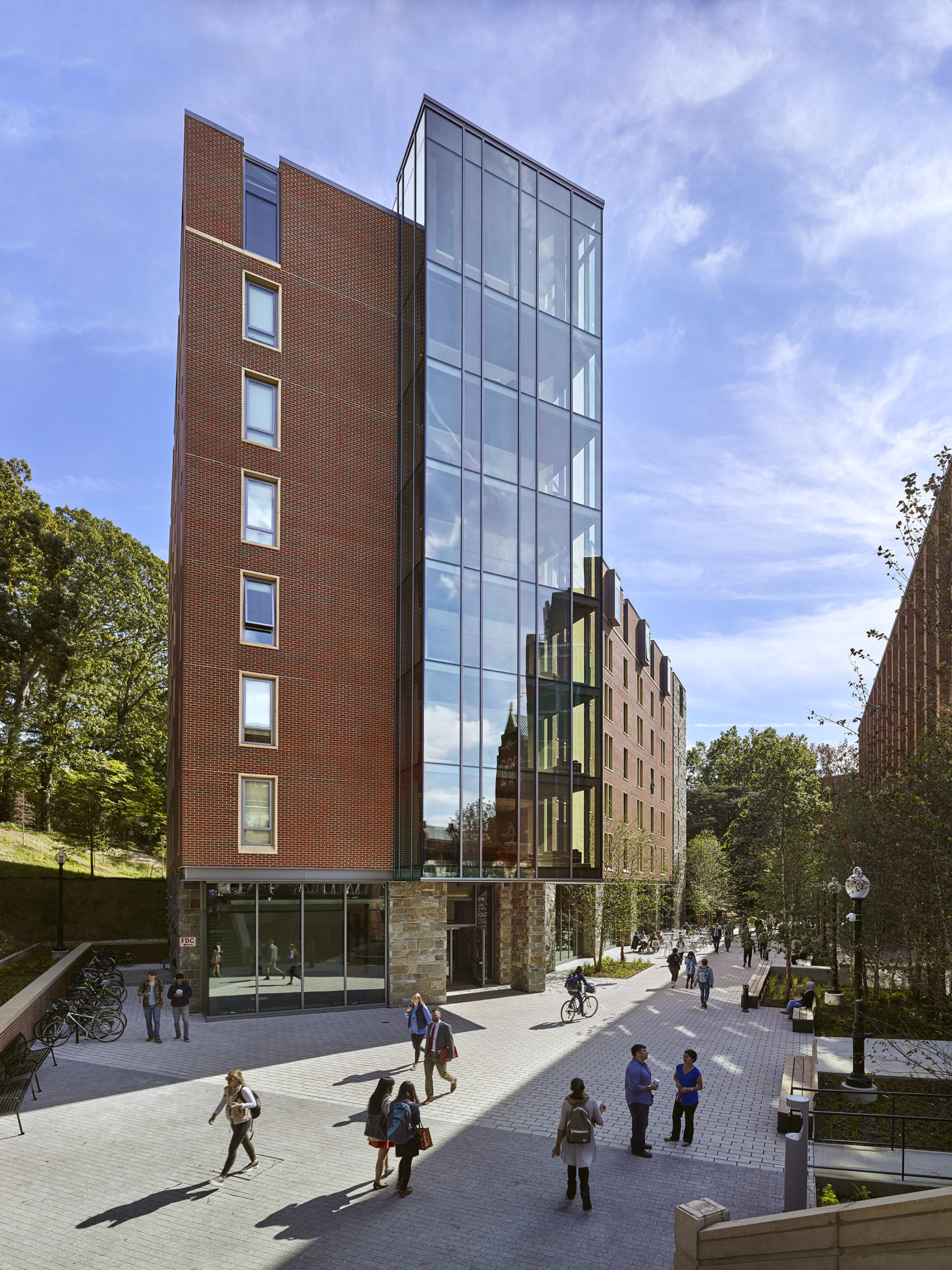
View from Leavey Center
As a symbol of a new paradigm for residential life on campus, Georgetown’s new 225-bed residence hall and associated landscape create a vibrant, connected, and engaging environment with materiality, texture, and coloration from historic buildings on campus.
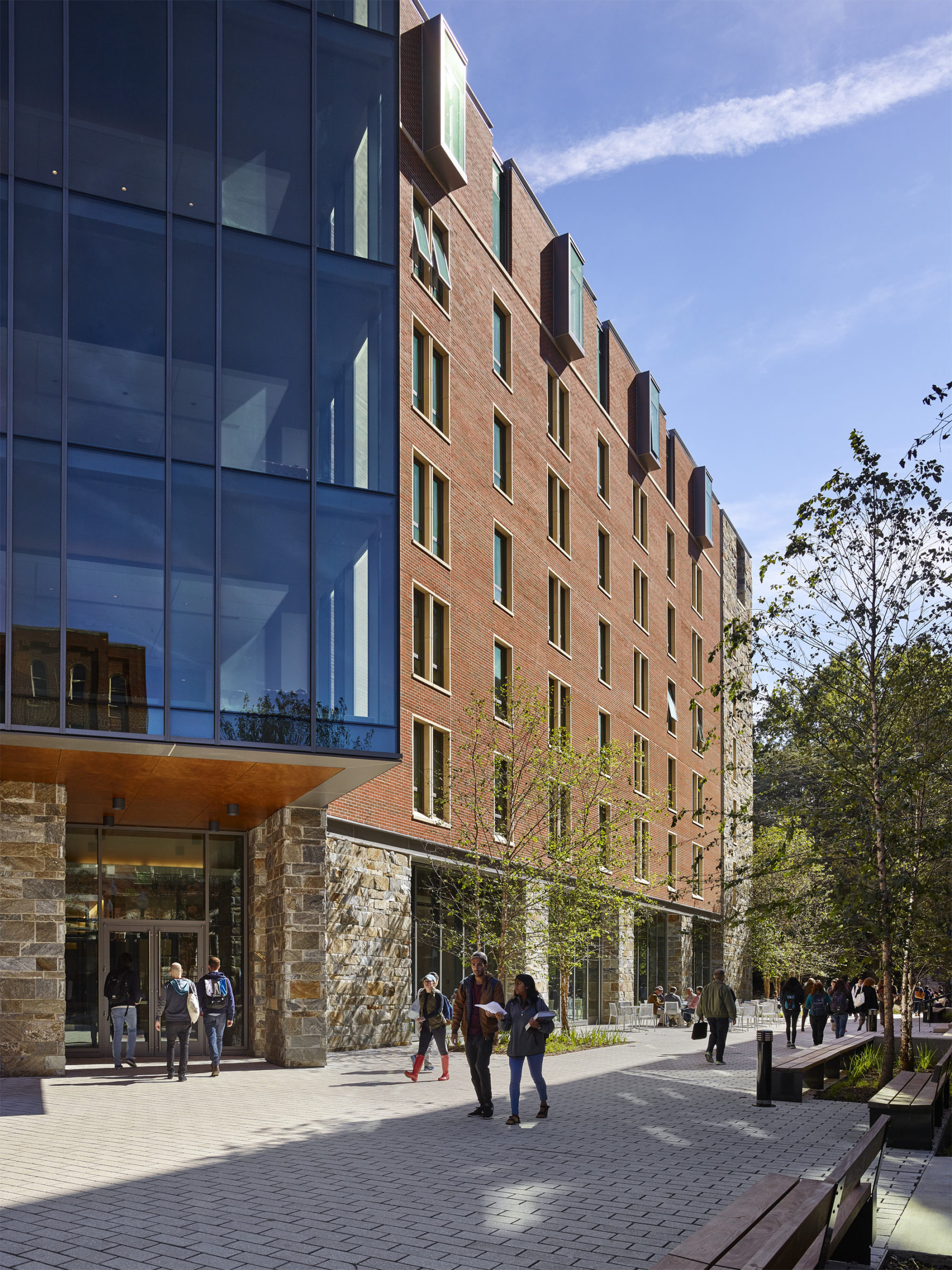
The new 225-bed Pedro Arrupe, S.J. Hall is a new paradigm for residential life on campus
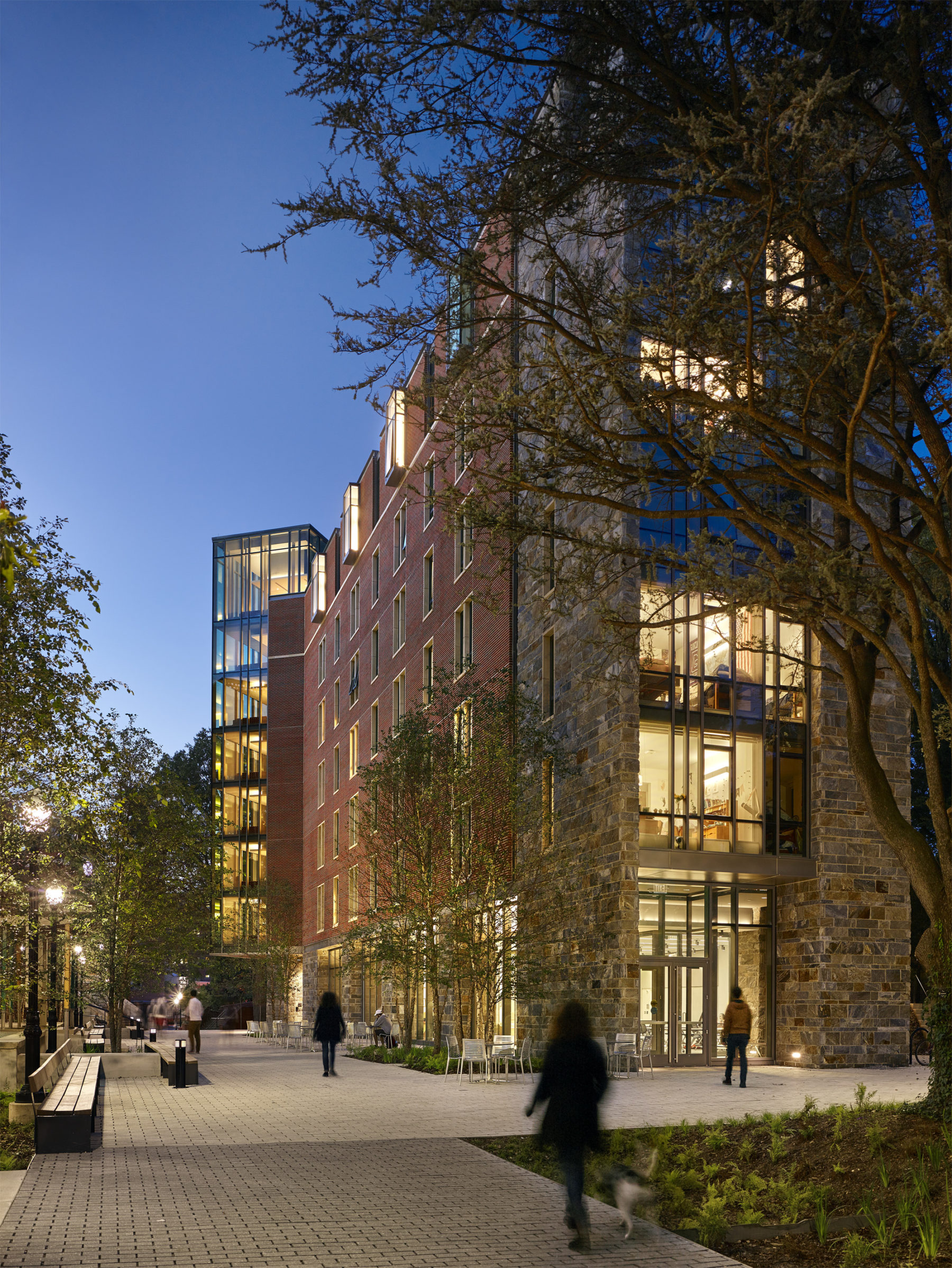
The building establishes multiple scales of public and private space reinforcing a spectrum of space needs which contribute to the function and livability of the building within an academic setting
The building massing takes advantage of a nestled site and makes the most efficient use of the available footprint while establishing greater transparency at the first floor level—where the entry areas and the living learning suite are located—as well as the lounge spaces in the residential floors. A stone base in hues of blue and grey grounds the building and establishes a direct architectural connection with the historic buildings on campus. A tower element composed of stone and glass frames the south facade, which is approached from the Copley Lawn—the largest open space on campus. To the north, a second tower clad in larger expanses of glass, create the effect of a lantern for the building, showcasing the University’s commitment to residential life as it contains the floor lounges for community building and socialization.
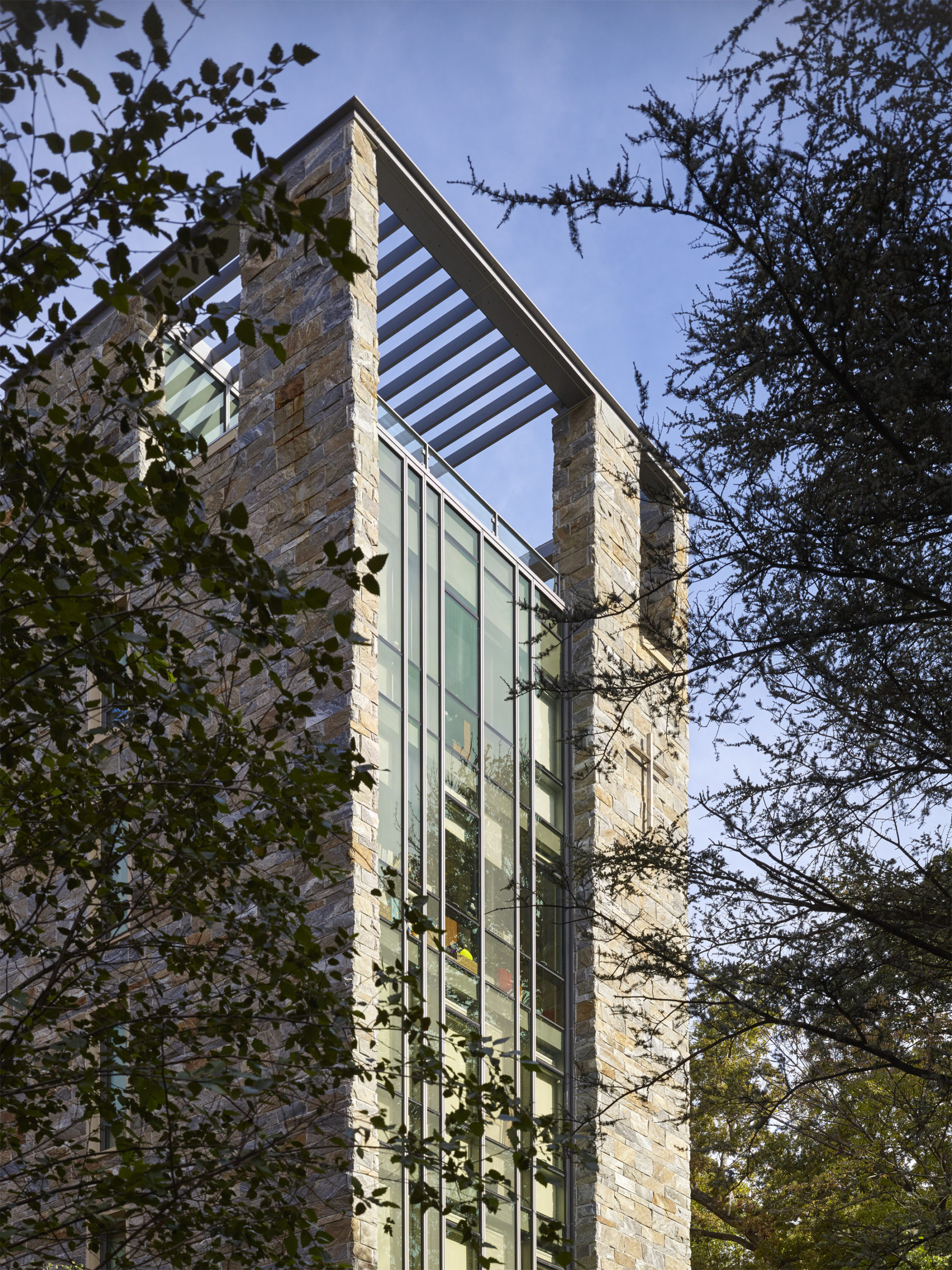
The top floor study workroom with adjacent exterior terrace overlooks the campus and beyond to the Washington Monument
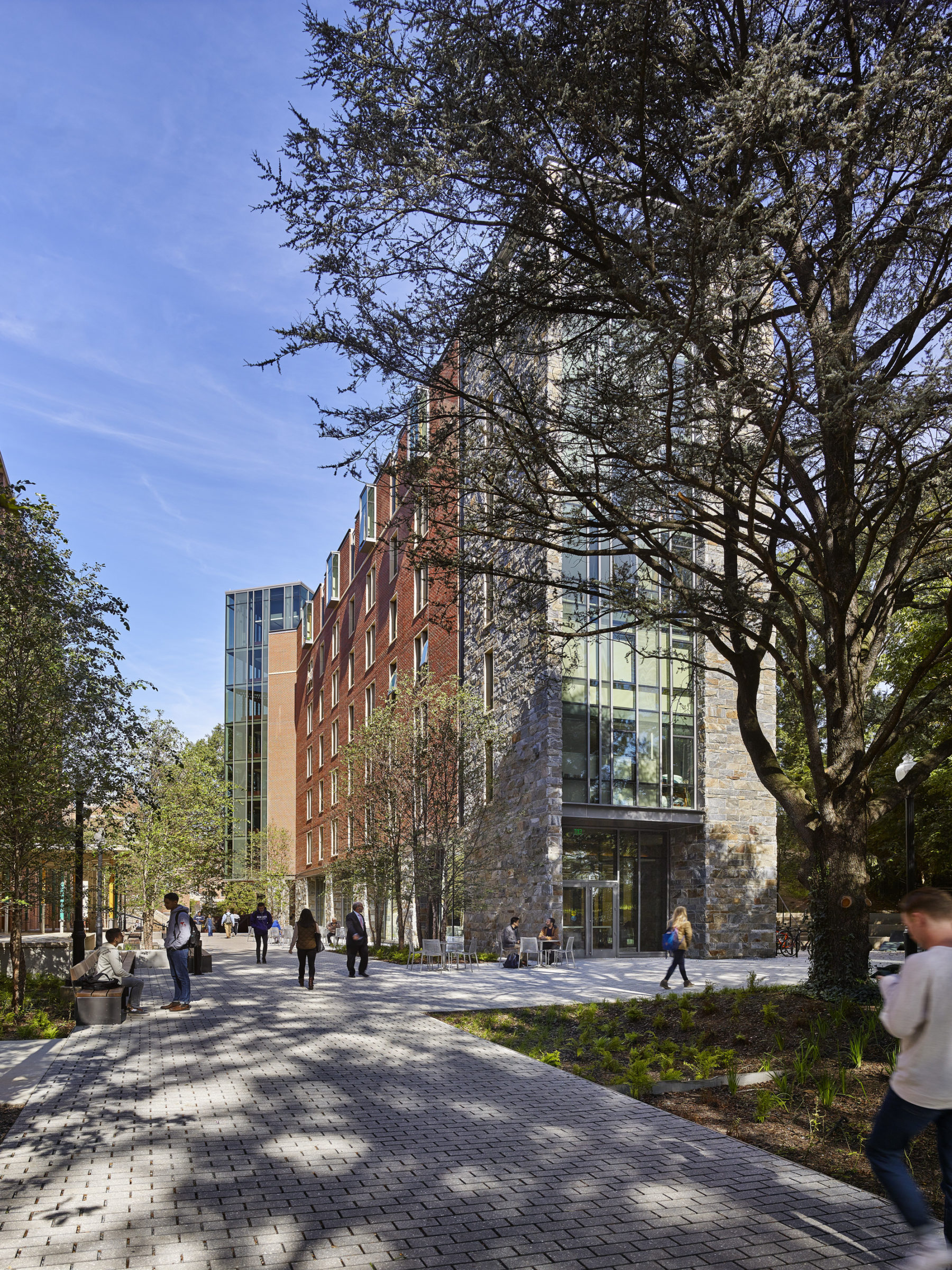
As the university embarked on a comprehensive reassessment of its student housing stock, this project was designed to embrace new concepts of living and learning for its residents and function as a nexus of student engagement on campus
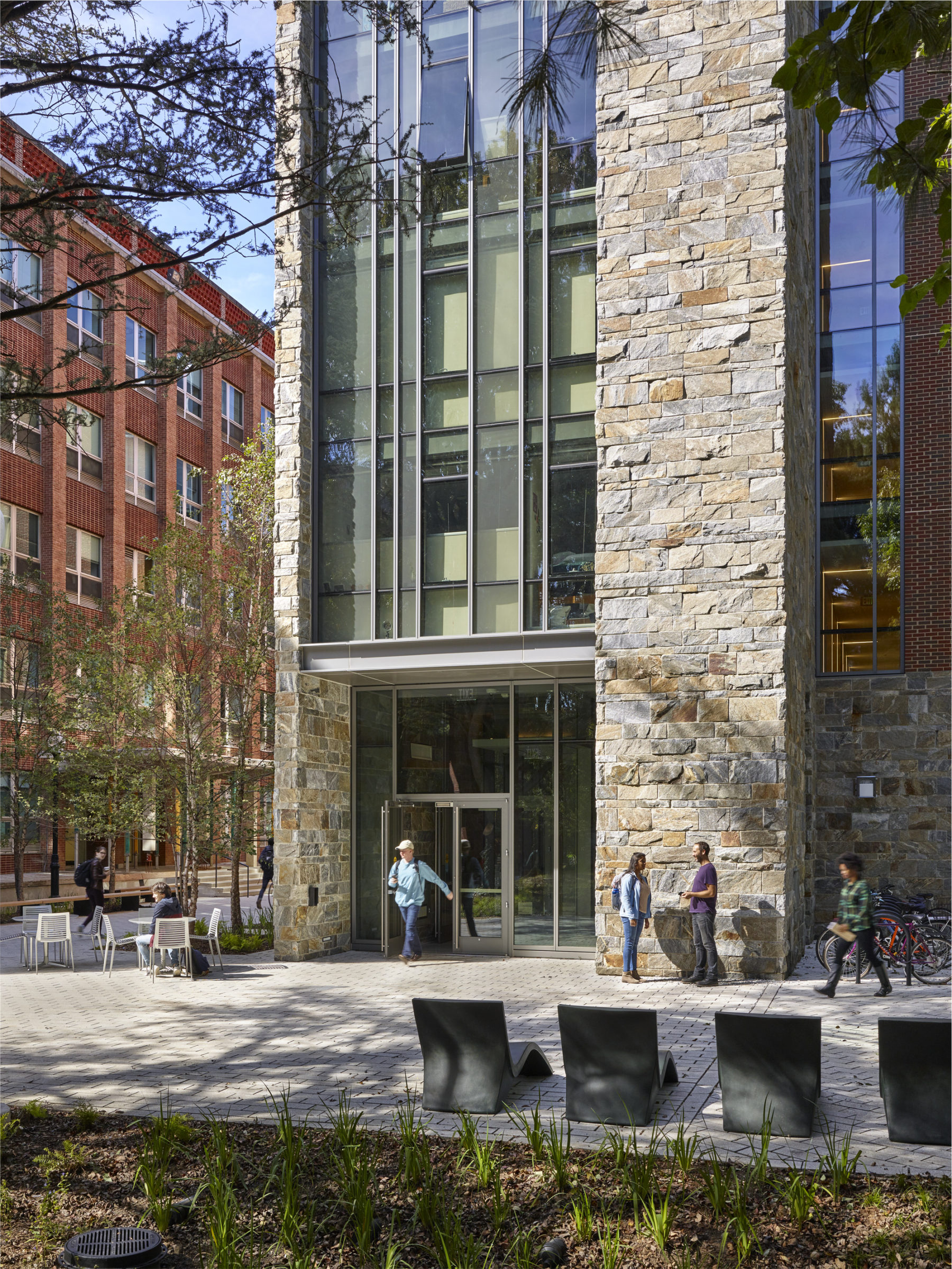
The main tower, which faces the historical campus, is clad in stone
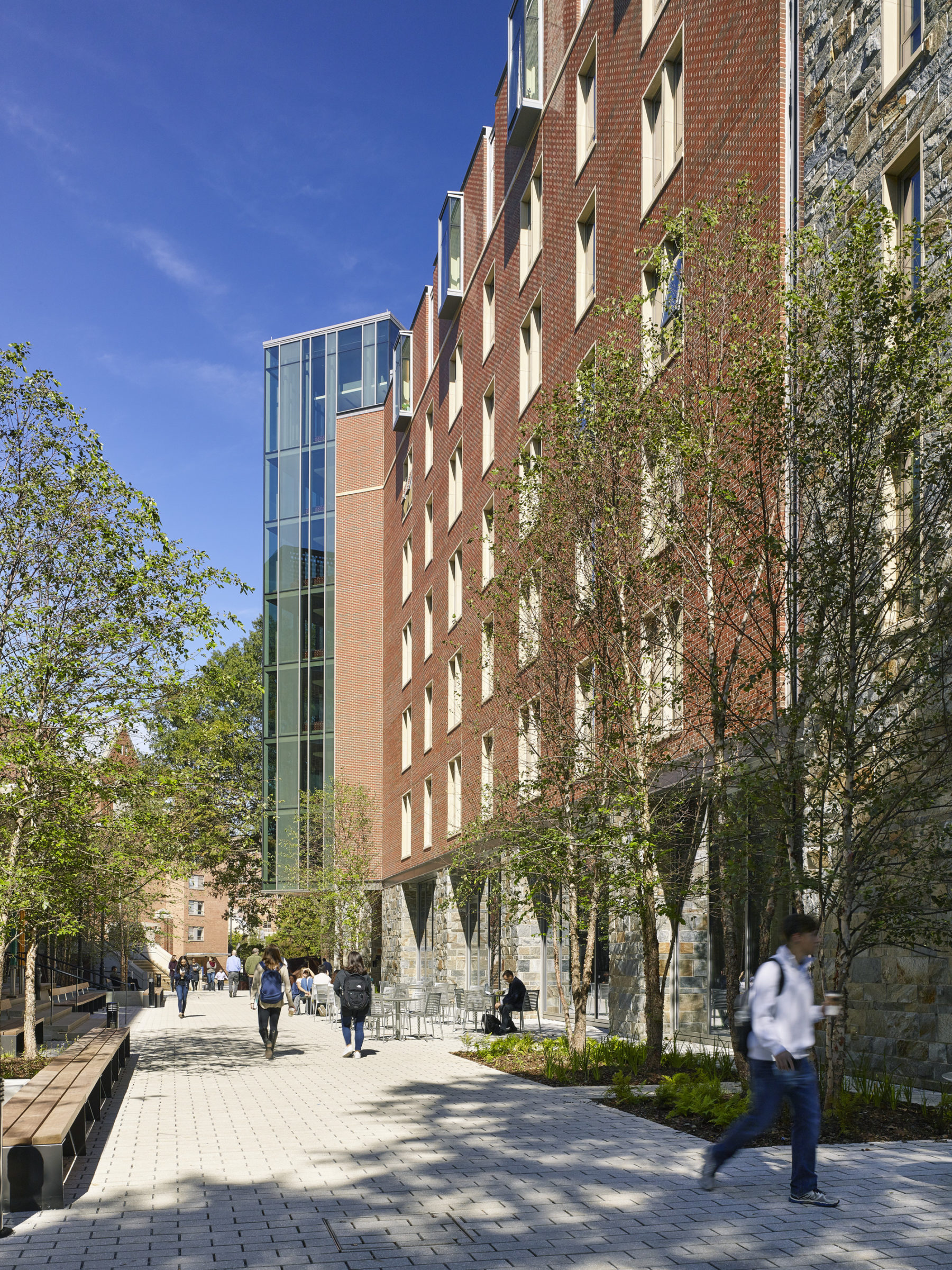
Upper facades are clad in brick, consistent with the surrounding structures
As the university embarked on a comprehensive reassessment of its student housing stock, this project was designed to embrace new concepts of living and learning for its residents and function as a nexus of student engagement on campus
The main tower, which faces the historical campus, is clad in stone
Upper facades are clad in brick, consistent with the surrounding structures
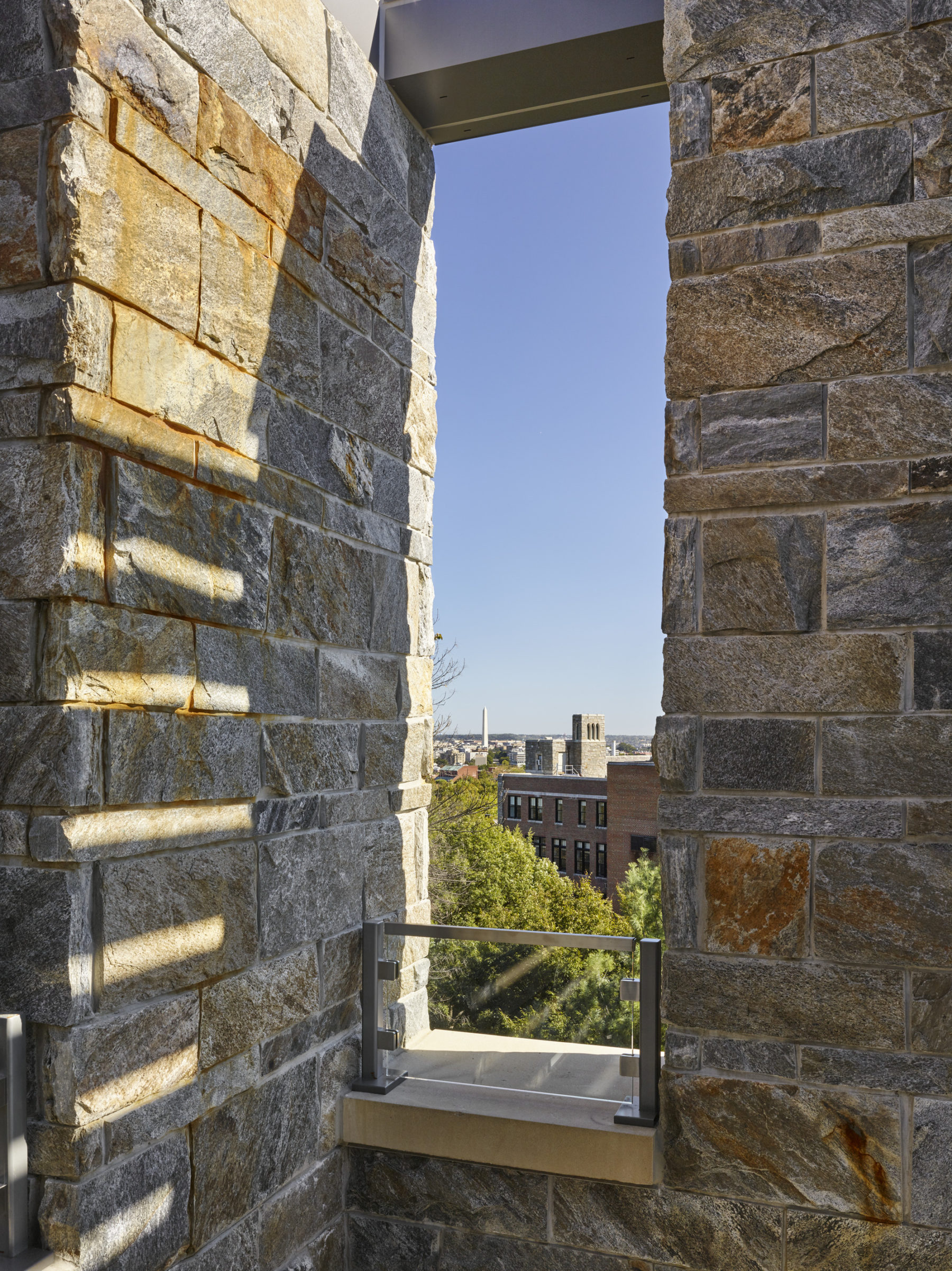
Detail from terrace looking towards the Washington Monument
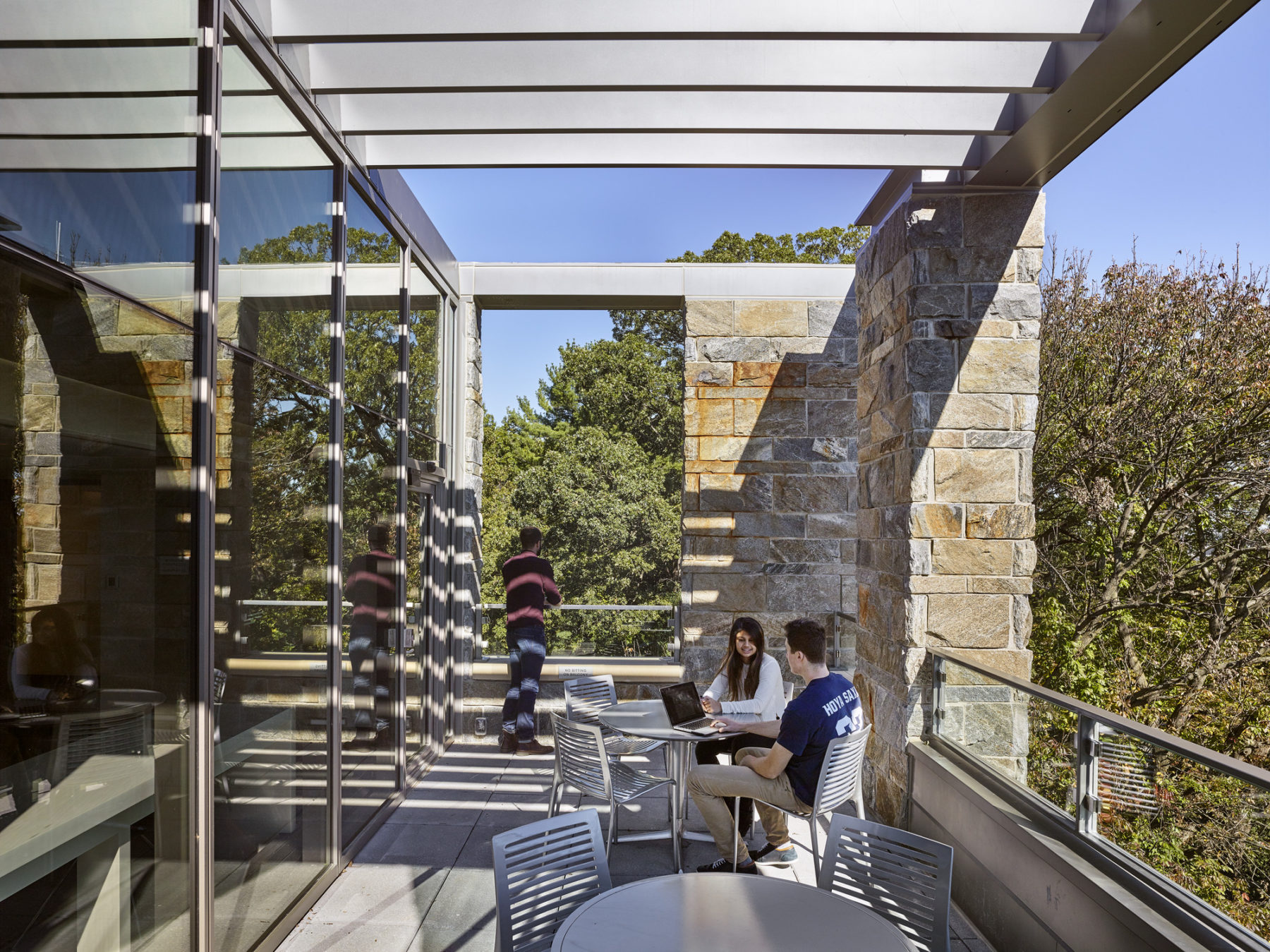
At the seventh floor, the stone cladding of the tower reveals an outdoor terrace—an alternative student space that supports socialization and engagement of the broader campus
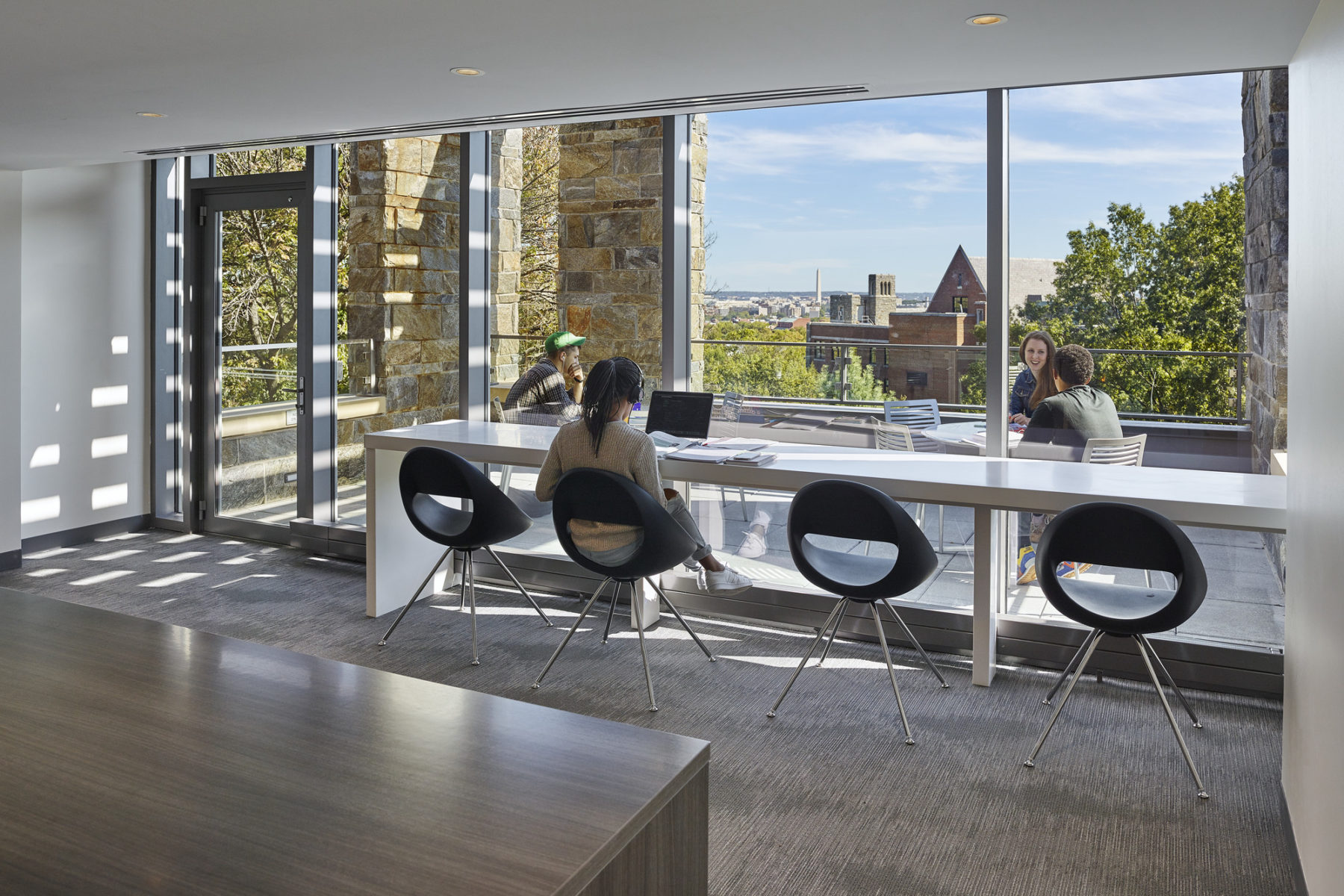
The seventh floor lounge overlooks the terrace and views of the Washington Mall beyond
The building’s first floor contains flexible formal and informal gathering spaces, including a multi-purpose room, student lounges, a workroom, break-out areas and a kitchen. The residential floors feature a mix of two, four, and six-bed suites, and each contain a student lounge, kitchen, and study space. In addition to the preservation of the majority of mature trees on site, the creation of new green terraces, pedestrian friendly plazas, and new outdoor seating areas combine to create welcoming and engaging landscape experiences along and around the building.
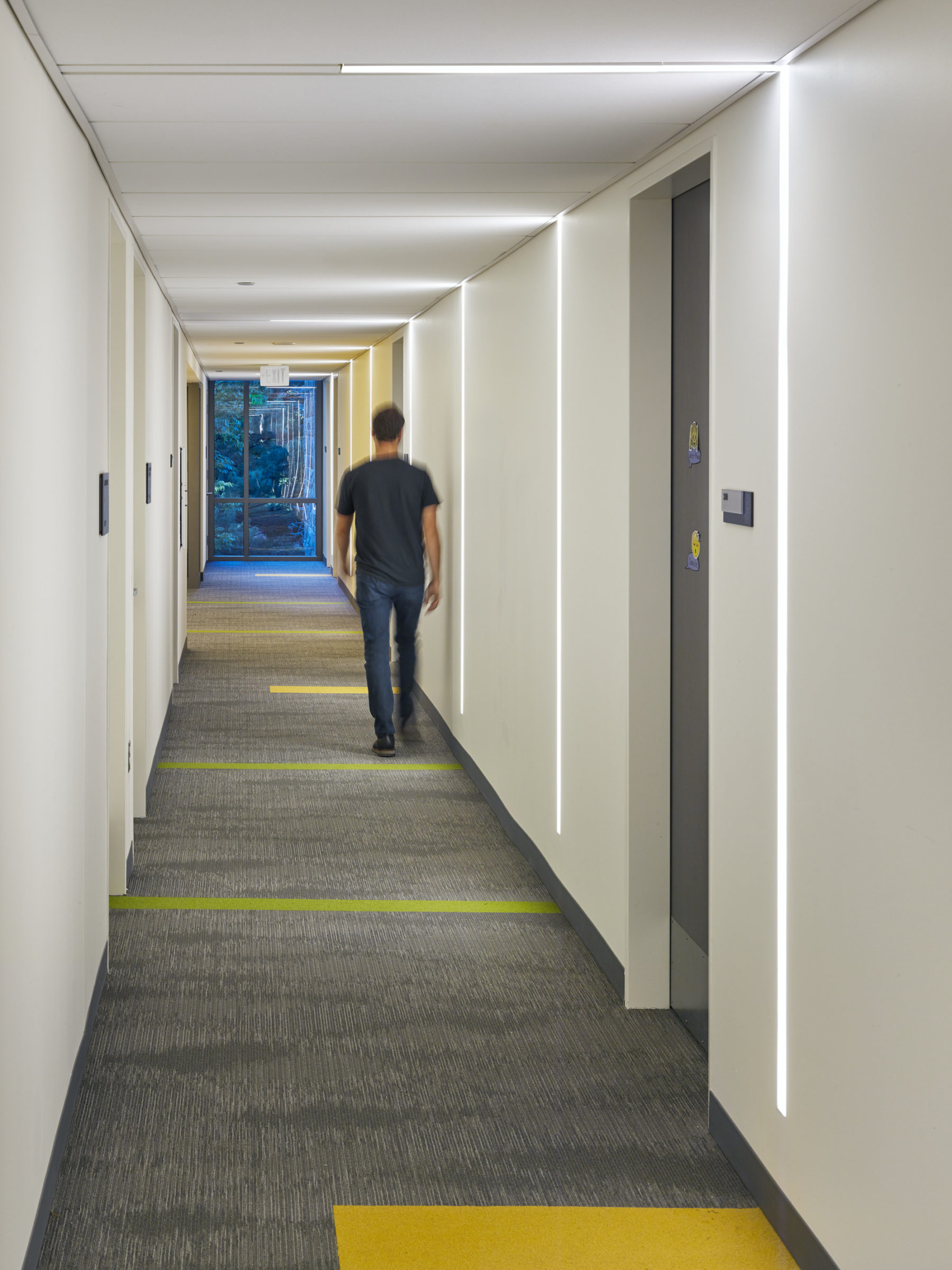
The first floor hub is a direct recognition that learning happens throughout campus, at all hours. The flexible studio is equipped to accommodate everything from a traditional class to a cross institution conference. Adjacent spaces—meeting rooms and lounges—are designed to offer opportunities for break-out areas during structured learning or informal study space.
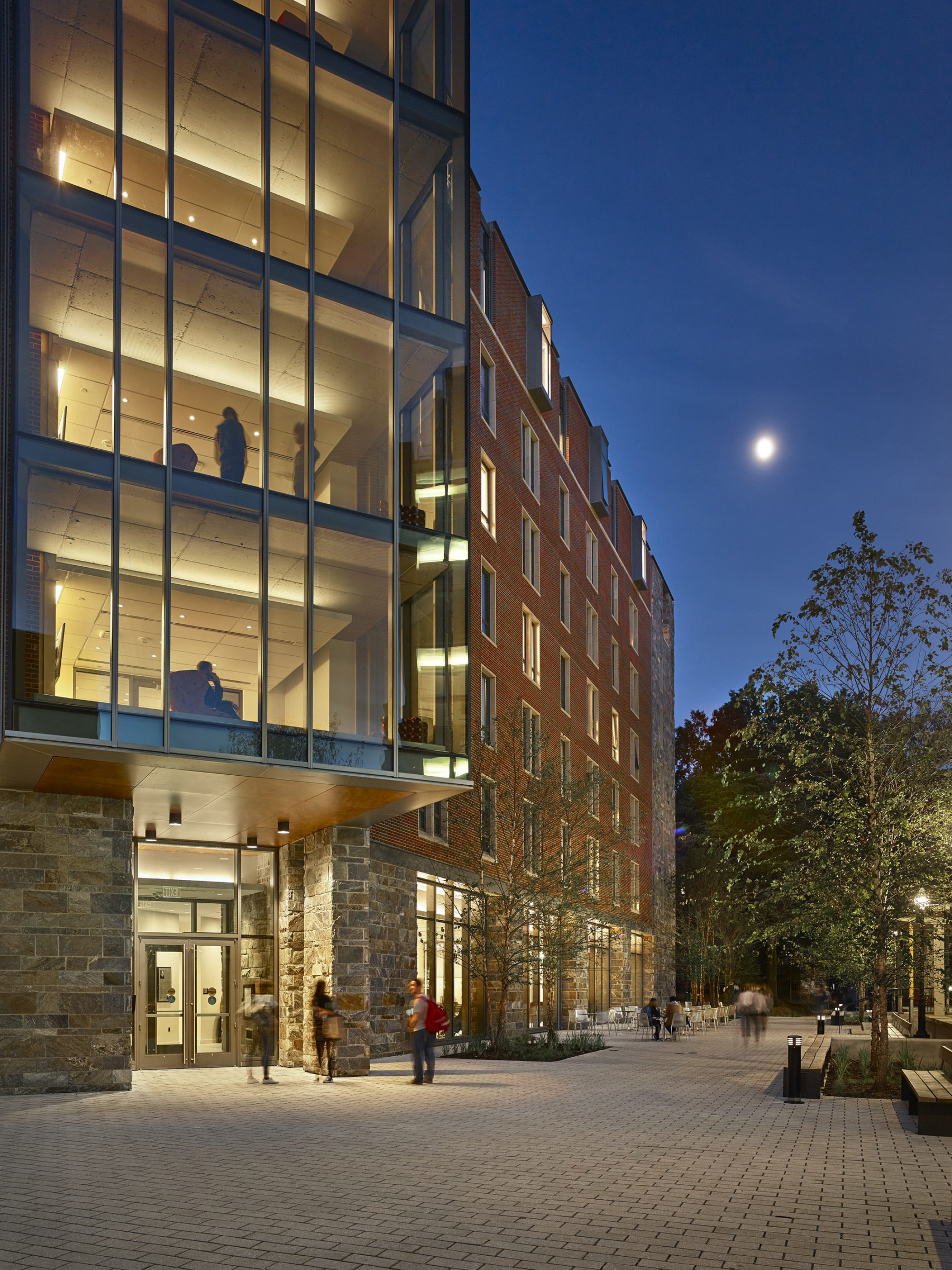
The student lounges are highly visible and telegraph student activity day and night from the new plaza and pedestrian path
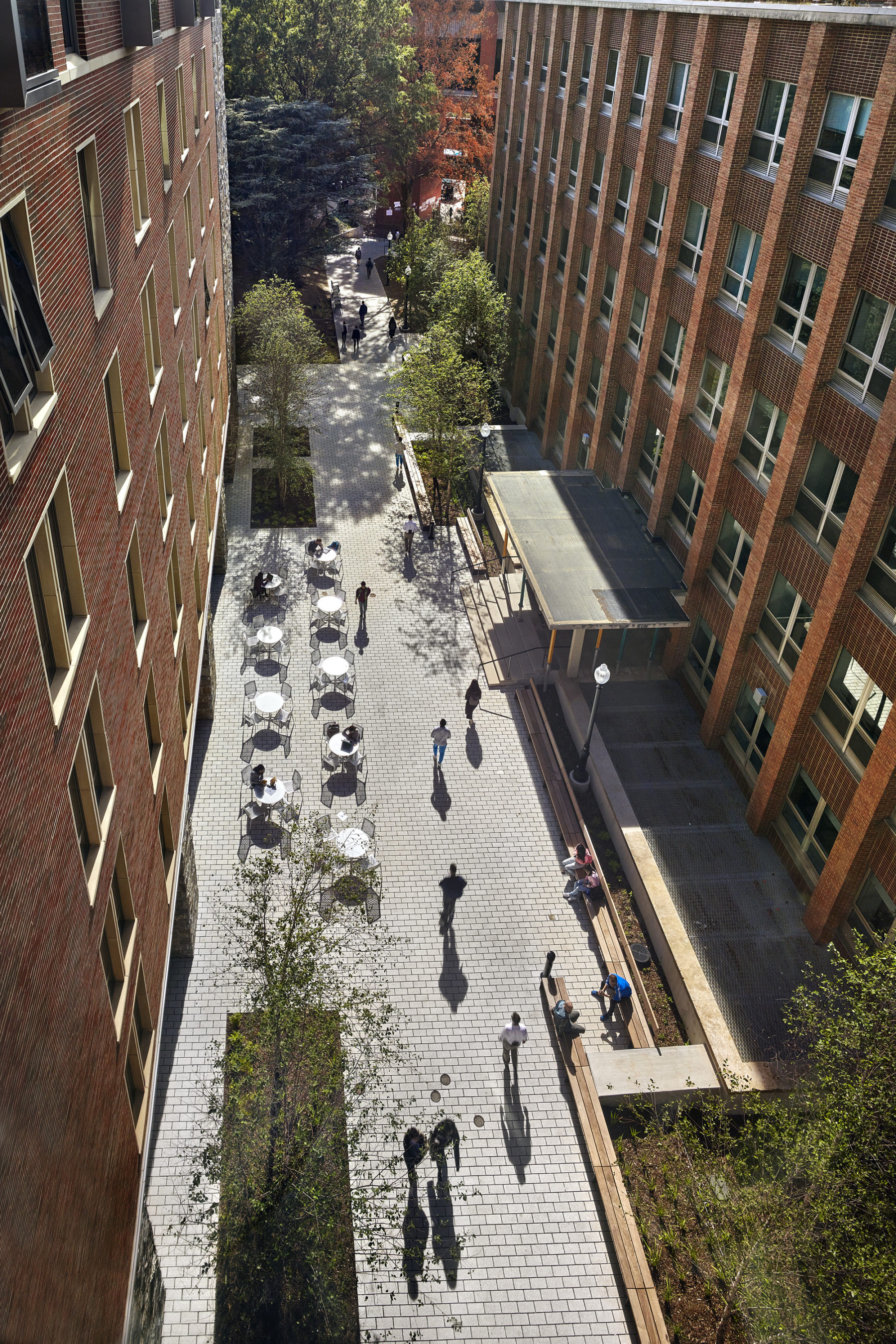
New Plaza
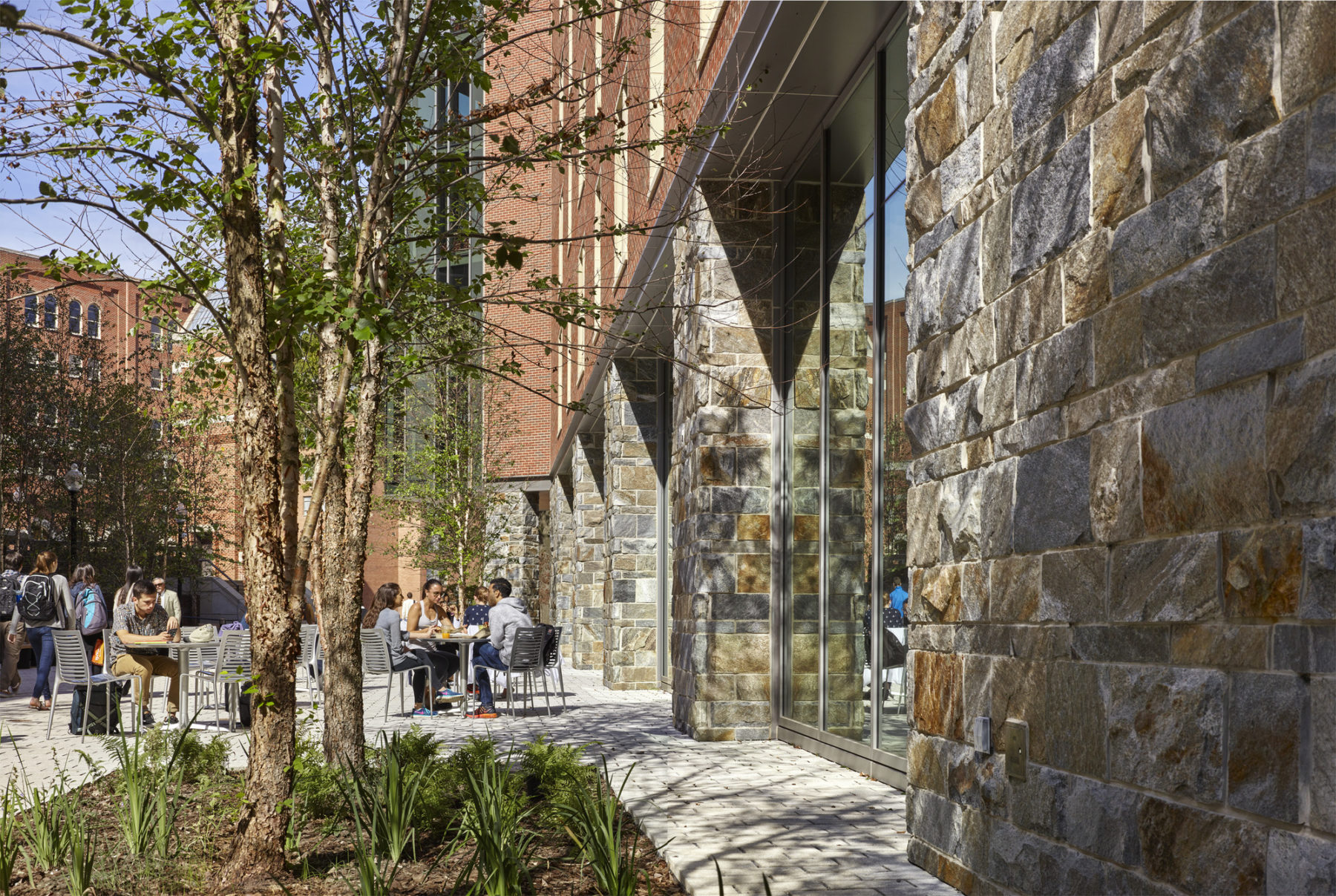
Porous indoor/outdoor environments along the new plaza and pedestrian way ensure that the inner life of the living & learning hub is visible to the broader campus and inviting to the student community
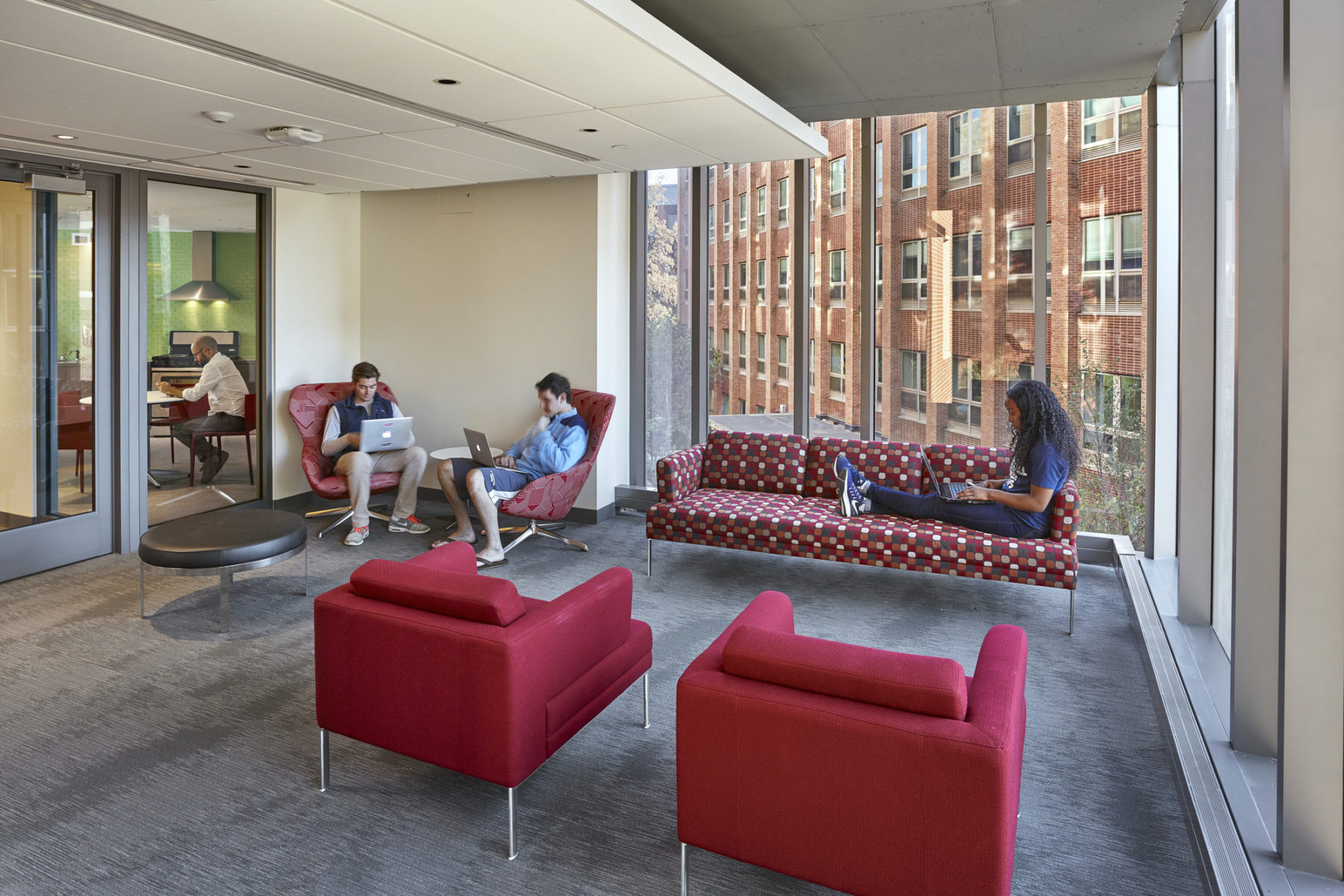
Interior view of student lounge space
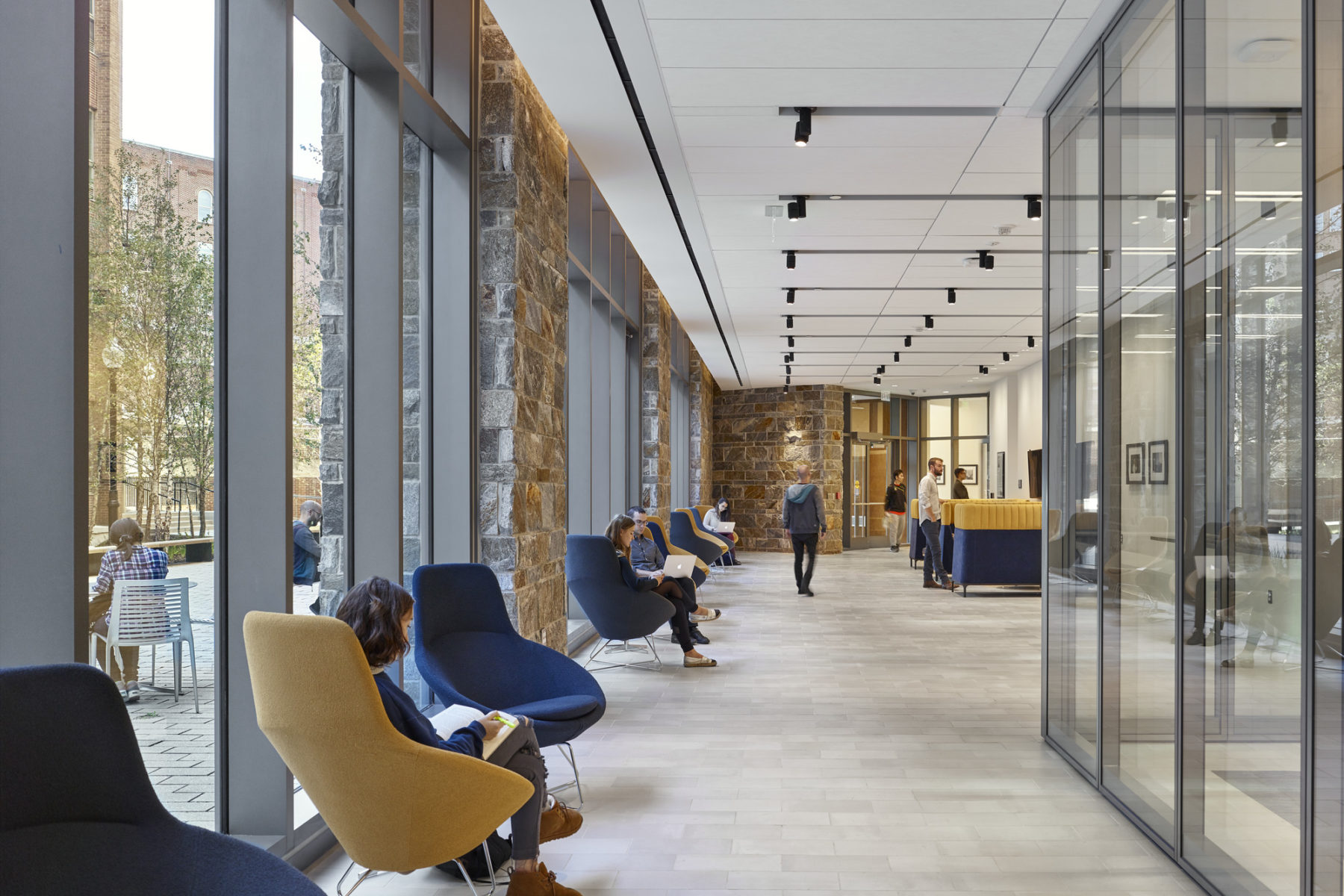
First Floor Living & Learning Space
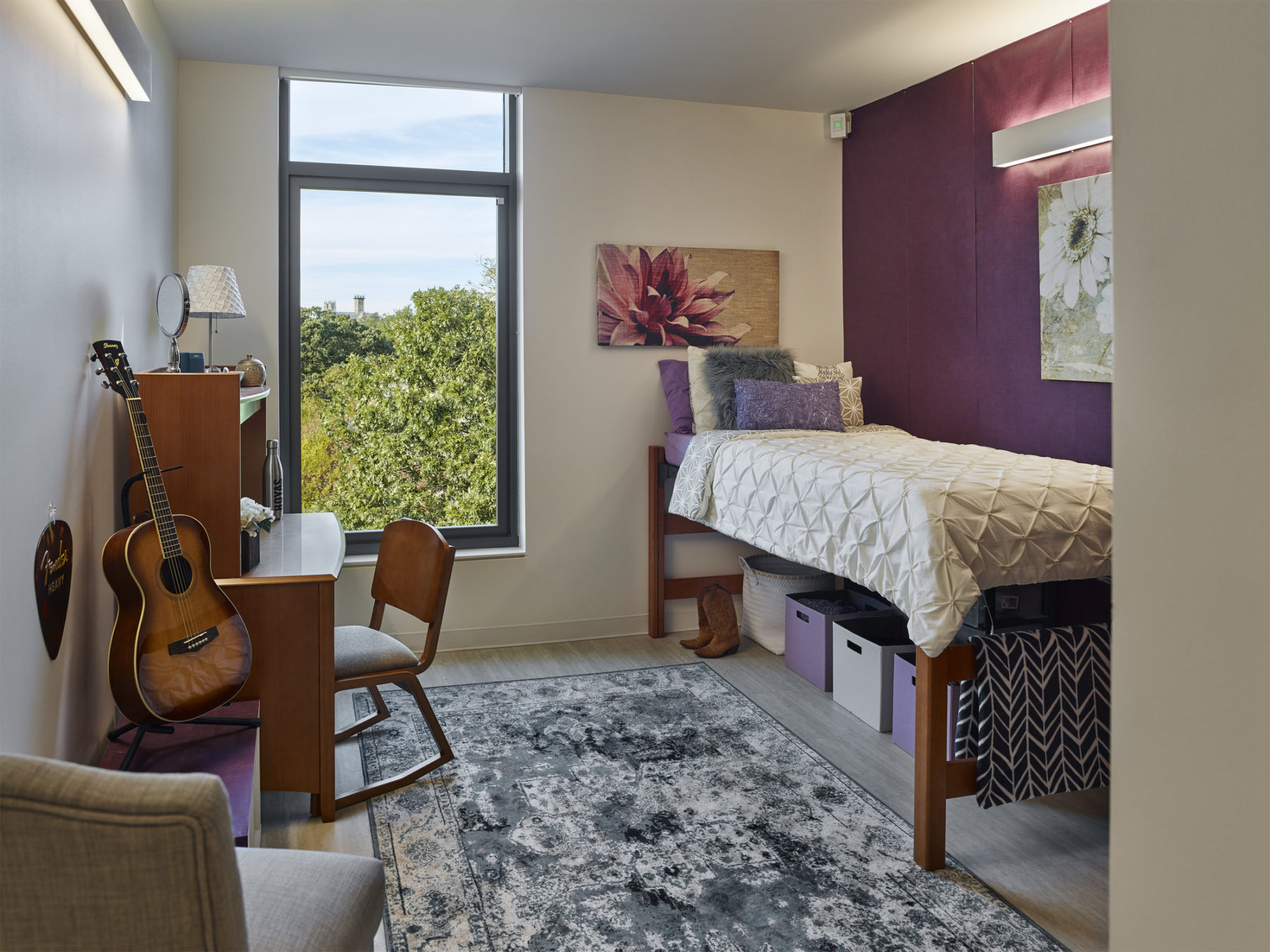
Student bedroom
Interior view of student lounge space
First Floor Living & Learning Space
Student bedroom
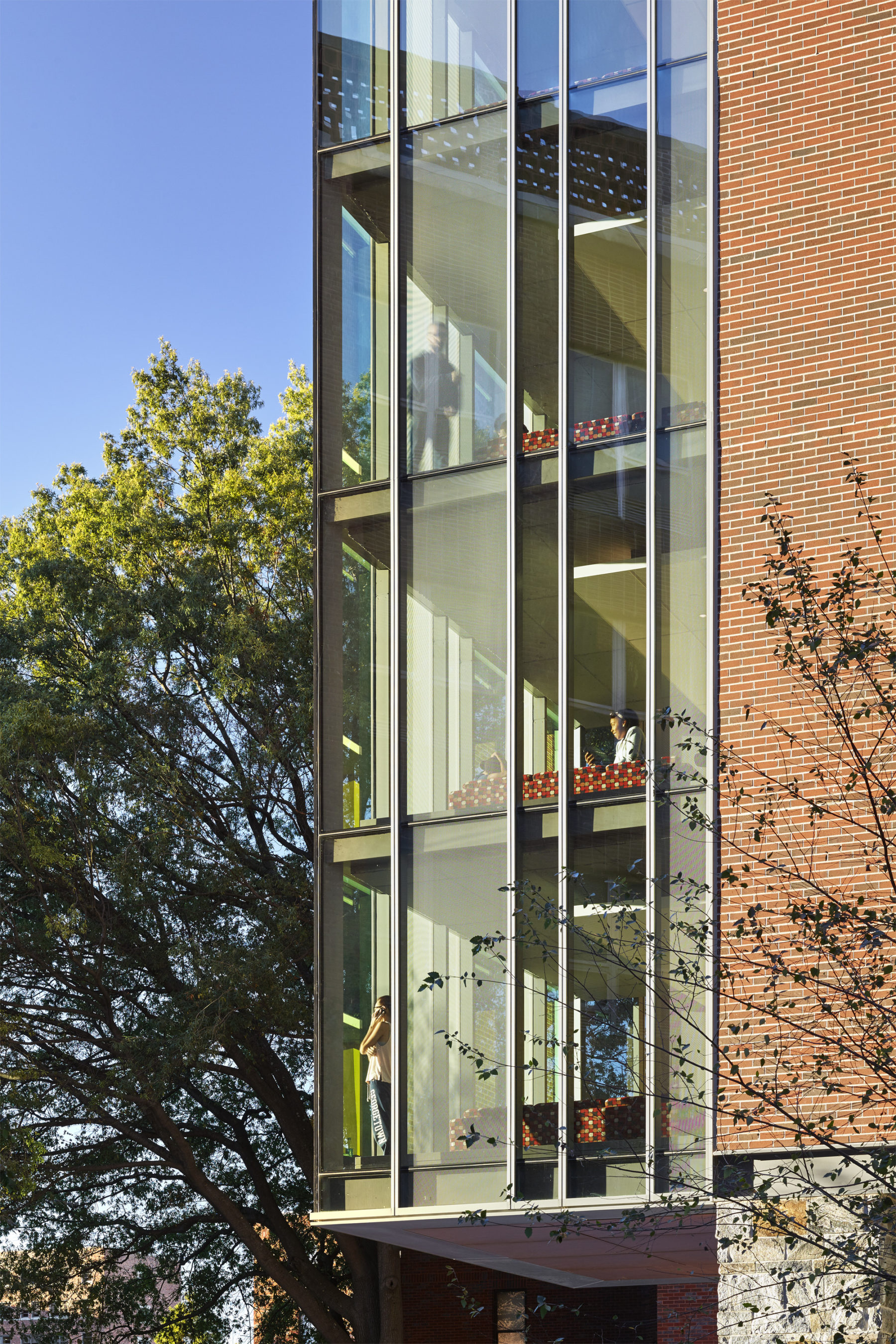
Student lounge spaces are extruded from the building’s northwest corner from floors two through seven
Sustainability strategies for the project include an emphasis on natural light, a green roof, permeable paving materials, storm water strategies, energy efficient systems, enclosed bicycle storage and strategies for renewable energy. The building is LEED Gold certified.
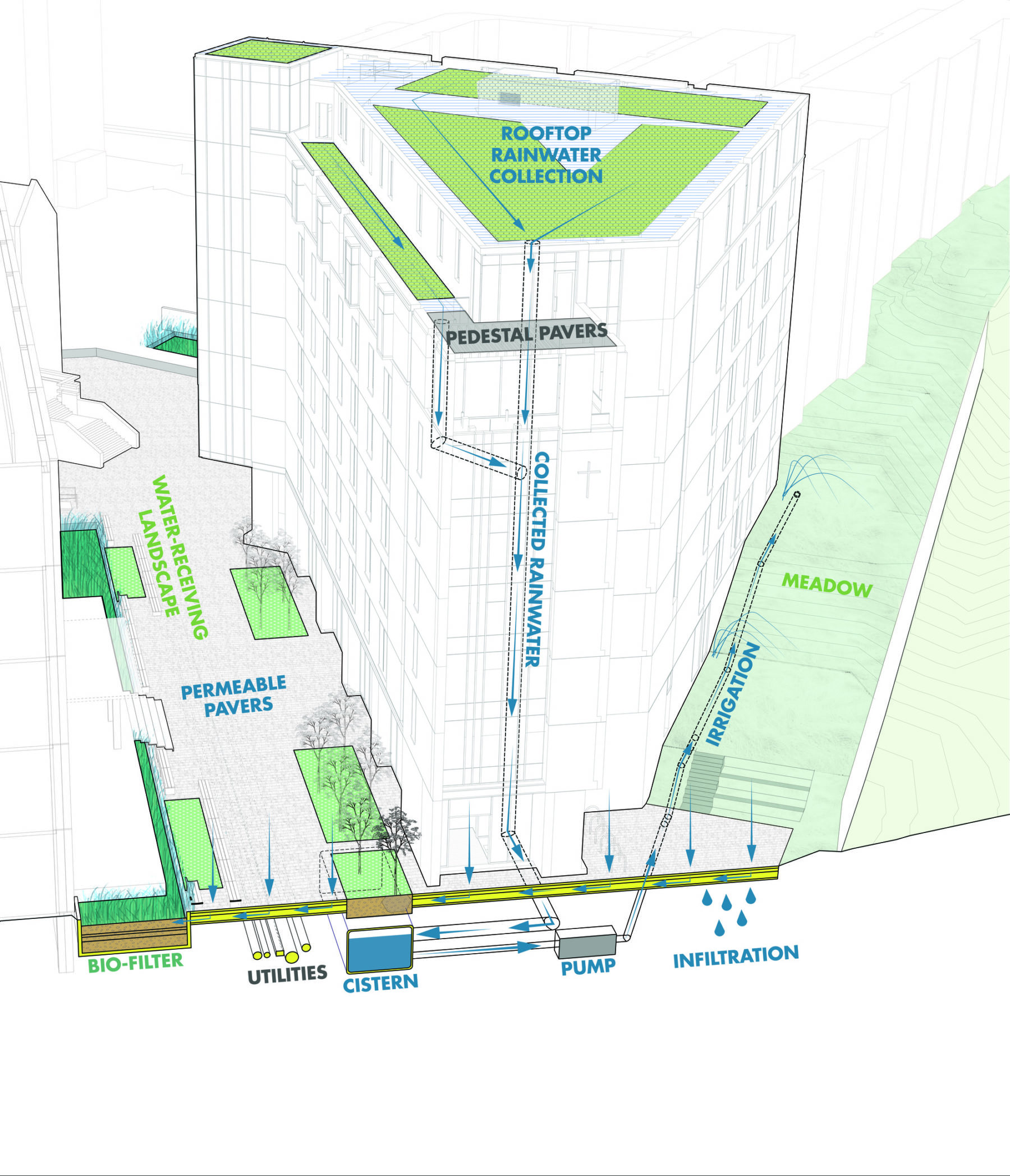
The project is LEED Gold certified and serves as a forward-looking model, establishing new campus standards for landscape materials, as well as being the first project on campus to comply with the DC Department of the Environment’s stringent new stormwater regulations
For more information contact Vinicius Gorgati.